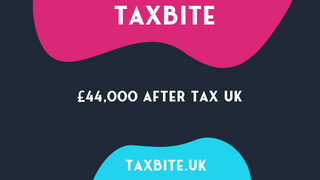As UK residents, we are all subject to income tax. Income, whether earned through employment or investments, is taxed on a sliding scale depending on the amount earned. The purpose of income tax is to fund government services, including education, healthcare, and public infrastructure.
Income tax impacts your finances by reducing the amount of money available for spending or saving. The amount of tax paid is determined by your income. There are tax-free allowances, which means that only income above a certain threshold is taxed.
It is essential to understand the basics of UK income tax, whether you are a first-time taxpayer or looking to refresh your knowledge. So, read on to learn more about how income tax works, its impact on your finances, and how to ensure you are paying the correct amount.
Income tax is a must for UK citizens. It’s taken from wages, salaries, pensions and investments. Money from income tax goes to public services such as health, education and infrastructure. All with earnings above a certain amount need to pay it. Personal allowances stop people having to pay tax if their income is below £12,570 for 2021/22.
The amount of tax differs for those who are employed and self-employed. Employers use the Pay As You Earn system to deduct taxes. Employees give National Insurance payments each week or month.
Other income sources, like rental income, dividends and savings interests, have extra tax if the limit is exceeded. Knowing the details helps individuals save on tax and fulfill their civic duties.
Income tax is essential to understand. It is calculated by your income and the tax rates of the year. The more money you make, the more tax you pay. There are allowances and deductions that reduce tax, like the personal allowance. This year it is £12,570 in the UK.
Each tax band has its own rate, for example: basic rate (20%), higher rate (40%), and additional rate (45%). Knowing these can make a difference to your take-home pay.
Where you live does not change the tax rates or allowances. But failing to pay the right amount comes with consequences – fines, legal action, even jail time. So it’s important to stay compliant with HMRC regulations to keep your finances secure.
With a salary of £40,500, it’s important to have a clear understanding of how income tax and national insurance are calculated, as well as their impact on your take-home pay. In this section, we will delve into the details of these deductions and explore how they apply to weekly, monthly, and yearly pay. By gaining a better understanding of these important financial factors, you can make informed decisions about managing your finances.
In the UK, employees have two major deductions from their salary: Income Tax and National Insurance. Income Tax is based on earnings, while National Insurance considers employment status and earnings.
Calculating both deductibles requires various factors, such as gross income, personal allowance, tax code, and applicable tax relief. The calculation varies depending on weekly, monthly, or yearly payments. See the table below for more info:
| Gross Income | Personal Allowance | Taxable Income | Basic Rate | Higher Rate | Additional Rate |
|---|---|---|---|---|---|
| Less than £12,570 | £12,570 | 0% tax rate | – | – | – |
| £12,571 to £50,270 | £12,570 | 20% tax rate | 20% on amount above personal allowance up to £37,700 | 40% on amount over £50,270 | |
| £50,271 to £150,000+ | None | 40% tax rate (salary above this level attracts additional tax) |
Changes in government policy can affect these calculations yearly. Plus, other deductions, like pension contributions or student loan repayments, may also apply.
If you want to know exactly how Income Tax and National Insurance are calculated based on your earnings and location, consult relevant government websites or trusted advisors. Monday-like feelings may occur for those paid on a weekly basis due to these deductions.
Income tax and National Insurance in the UK are based on income. The amount of deductions varies depending on how often an individual is paid. To understand take-home pay, you must look at each place. For example, in Northern Ireland, someone earning £40,500 a year has a 20% tax rate, meaning £8,100 in taxes. There’s also a National Insurance contribution of £4,923.12, with weekly deductions of £94.48 and monthly deductions of £410.25.
Remember deductions vary depending on income level and location. To make sure you know your obligations, use an income tax calculator. This will give you a full view of taxes and help you plan finances.
It’s always wise to plan ahead when it comes to your finances, and this includes understanding the tax rates for the upcoming year. In this section, we’re going to take a look at the tax rates for 2022/2023 in different locations and what that means for your net income. We’ll also provide you with a handy table breakdown of deductions for each location. So whether you live in England, Wales, Scotland, or Northern Ireland, read on and find out what you can expect in terms of your take-home pay.
The net income for people in England, Wales, Scotland, and Northern Ireland is what they get after taxes and other deductions.
These deductions include National Insurance contributions and pension contributions. These will differ in 2023/2024 due to dissimilar tax rates.
A table can help individuals understand the weekly, monthly, and yearly pay for each location, along with the deductions for Income Tax and National Insurance.
Everyone has a personal allowance and tax band that apply before they pay Income Tax. Different job categories have types of taxable income, such as salary, dividends, or rent. For these, different tax relief schemes are available.
Apart from taxes, student loan and pension contributions also affect the net income. People must take these into account when calculating their net income. By optimizing deductions based on location and job category, plus making adjustments for student loan or pension contributions, individuals can ensure they get the most money while abiding by the law.
Income tax deductions differ in the UK. To see the breakdown, a table’s been made with data for England, Wales, Scotland, and Northern Ireland. It shows various deductions from gross income in 2023/2024. This table has info on employment type, gross income, national insurance, pension contributions, student loans repayments (if applicable), and total deductions.
Scotland has unique tax rates compared to other UK locations. The table has data on how gross income is calculated and deductions based on relevant taxes. It also shows differences in deductions between locations.
Using the info, you can work out taxes based on job category. And plan your next holiday to Benidorm! Don’t wait any longer – use the data in this table to make the most of your income and plan your finances.
The following table shows the breakdown of income tax deductions in the UK:
| Location | Employment Type | Gross Income | National Insurance | Pension Contributions | Student Loans Repayments | Total Deductions |
|---|---|---|---|---|---|---|
| England | – | – | – | – | – | – |
| Wales | – | – | – | – | – | – |
| Scotland | – | – | – | – | – | – |
| Northern Ireland | – | – | – | – | – | – |
If you want to have a clear idea of the amount you will be taking home in 2023, then stay tuned! Our Income Tax Calculator, which is categorized into different job categories, will help you understand the money you’ll be receiving after tax deductions. We’ll explain the technicalities of Personal Allowance and Tax Bands so that you can have a clear understanding. Moreover, we’ll also discuss the Types of Income that are taxable and the Tax Relief Available in the UK. Finally, we will explore the seemingly daunting world of adjusting Income for Student Loan and Pension Contributions.
Taxpayers in 2021/22 need to consider personal allowances and tax bands. The table shows the income ranges, rates and tax bands. The personal allowance is up to £12,570 and has a rate of 0%. The basic rate is 20%, between £12,571 and £50,270. The higher rate is 45%, between £50,271 and £150,000. Above this, the additional rate is 45% or 46% in Scotland, depending on income. Taxes depend on salaries and other sources, such as rental income or dividends. To reduce taxable income, taxpayers can use reliefs, like pension contributions and charitable donations. By understanding personal allowances and tax bands, individuals can reduce taxes and improve their finances.
Understand income tax for managing your finances! It’s important to know which types of income are taxable and eligible for tax relief. Taxable income includes salaries, wages, pensions, and rental income. Plus self-employment income, dividends from shares, and interest on savings.
We’ve created a table breakdown to help you learn which types of income are taxable and eligible for tax relief in the UK. It includes employment and self-employment income, property and rental income, plus dividends from shares and interest on savings/bonds. Also, state benefits/pensions/tax credits and other miscellaneous sources of income. Our table indicates if each is taxable or non-taxable/ineligible for tax relief.
Remember, there may be certain situations that our table doesn’t reflect. So, it’s best to get professional advice. Also, taxes change annually, so use an up-to-date financial resource for the current tax year. Variations in the application of taxes may exist, depending on where you live in the UK. Knowing these nuances can help you optimize your tax situation, legally and compliant with relevant regulations.
Lessening your income for student loan and pension contributions can have a huge effect on the tax you owe. If you have a loan, contributions will be taken from your salary automatically. Pension contributions, however, you can make by choice. Both will decrease your taxable income, causing a lower tax debt.
A vital part of knowing your taxable income is learning which incomes are taxable. Salary/wages, bonuses, overtime payments, and other incentives are all subject to tax. You might also be allowed tax relief for certain costs like business-related expenses or charitable donations.
To adjust your taxable income for student loan and pension contributions when figuring out your taxes, you need to add up the total contribution made in the tax year. This info is often on your payslip or yearly statement.
Making contributions towards both student loans and pensions early in your career can help you save on taxes and make sure you have a better financial future. By making voluntary pension contributions and automatic student loan payments, you can lessen your taxable income and ultimately reduce your tax bill.
Optimizing income tax is hard for many. To do it right, knowledge of current tax rates and allowances is key. Ways to reduce taxable income include taking advantage of reliefs and allowances. Like pension schemes and charity donations.
Planning finances and tracking income is important. As is being aware of tax law changes. In 2023, an individual with an income of £40,500 can benefit from a range of tax allowances. This includes pension contributions, tax-free savings and other investments.
Understanding and optimizing income tax takes time and research. But it’s necessary for financial stability. Utilizing available tax reliefs and allowances can lead to big savings on income tax.
According to various sources, the net pay for a £40,500 salary in the UK is typically between £30,725.78 and £31,215 per year, or £2,601 per month, depending on location and tax year.
The tax on a £40,500 salary in the UK is typically calculated using a combination of income tax (PAYE) and National Insurance (NI) deductions, which vary depending on location and tax year. One can use a tax calculator to estimate their tax liability.
A marginal tax rate is the tax rate that applies to any additional income earned above a certain threshold. For a £40,500 salary in the UK, the marginal tax rate is typically between 20% and 33.3%, depending on location and tax year. This means that any extra net income generated, such as a bonus, will be taxed at this higher rate.
According to the data provided, a £1,000 bonus on a £40,500 salary in the UK typically generates an extra £668 of net income, and a £5,000 bonus typically generates an extra £3,338 of net income. However, the exact amount of extra net income generated may vary depending on location and tax year.
The take-home pay for a £40,500 salary in the UK is typically calculated by subtracting the income tax and National Insurance deductions from the gross pay. The exact amount of take-home pay may vary depending on location and tax year.
For a £40,500 salary in the UK, different tax bands and rates apply depending on income and location. The first £12,570 of earnings is typically tax-free, and the rest is taxed at either the basic rate of 20% or the higher rate of 40%. There is also an additional rate of 45% that applies to those with higher incomes. National Insurance is also payable on income above a certain threshold, typically 12% on income between £9,568 and £50,270 per year, with a lower rate of 2% on any income above that.
Here’s a list of similar salaries:



















